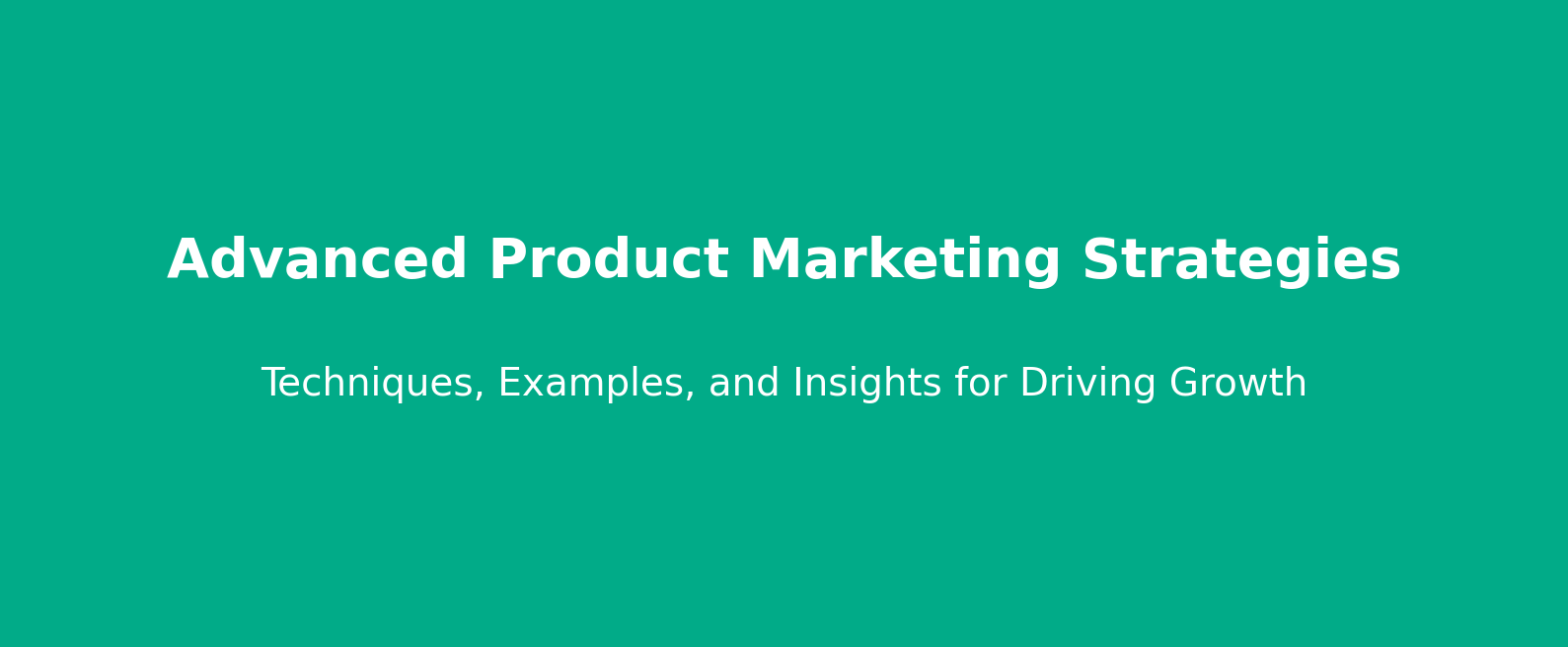This article is a part of our Comprehensive Guide to Product Marketing Success
Product marketing is an ever-evolving discipline that requires continuous learning and adaptation. As markets become more competitive and customer expectations rise, leveraging advanced product marketing strategies can make a significant difference in a product’s success. This guide will explore several advanced strategies, providing real-life examples and expert insights to help you stay ahead of the curve.
“Marketing’s job is never done. It’s about perpetual motion. We must continue to innovate every day.” – Beth Comstock, former CMO of GE
Understanding Advanced Product Marketing Strategies
Assuming that you have already worked upon your Product-Market Fit and Customer Validations, Defined your North-Star for Product Growth and laid down a well though Go-To-Market Strategies; it’s time to move up the ladder and explore the advanced product marketing strategies.
Behavioral Segmentation
Behavioral segmentation involves dividing your market based on consumer behaviors such as purchasing habits, user status, and brand interactions. This segmentation is crucial for creating highly targeted marketing campaigns.
Importance of Behavioral Segmentation
Behavioral segmentation allows marketers to understand customer needs and preferences more deeply, enabling them to create personalized experiences that resonate with different customer groups.
“Marketing segmentation is the key to making the marketing mix work.” – Philip Kotler
Techniques and Tools
- RFM Analysis: Recency, Frequency, and Monetary value analysis helps identify high-value customers.
- Customer Journey Mapping: Visualize the customer journey to identify key touchpoints and behaviors.
- Surveys and Feedback: Collect data directly from customers to understand their behaviors and motivations.
- Tools: Google Analytics, Kissmetrics, Hotjar
Using AI and Machine Learning in Product Marketing
AI and machine learning can significantly enhance product marketing by automating tasks, predicting customer behavior, and personalizing customer interactions.
Benefits of AI and ML
- Efficiency: Automates repetitive tasks, freeing up time for strategic activities.
- Personalization: Delivers personalized content and recommendations.
- Predictive Insights: Analyzes data to predict future trends and behaviors.
How to Implement AI and ML
- Data Collection: Gather data from various sources such as CRM systems, social media, and web analytics.
- Algorithm Development: Develop algorithms to analyze and interpret the data.
- Integration: Integrate AI tools into your marketing platforms to automate tasks and gain insights.
Example: Netflix uses AI to personalize content recommendations based on user behavior, viewing history, and preferences, keeping users engaged and reducing churn.
Growth Hacking Techniques
When we talk about advanced product marketing strategies, Growth Hacking is a buzzword.
Growth hacking involves experimenting with various marketing tactics to achieve rapid growth. It requires a mix of creativity, data analysis, and unconventional thinking.
What is Growth Hacking?
Growth hacking is a process of rapid experimentation across marketing channels and product development to identify the most effective ways to grow a business.
Effective Growth Hacking Strategies
- Referral Programs: Encourage existing users to refer new users by offering incentives.
- Viral Marketing: Create content that encourages sharing and word-of-mouth promotion.
- A/B Testing: Continuously test and optimize marketing campaigns to improve performance.
Case Study: Airbnb used growth hacking by integrating its platform with Craigslist, allowing users to post their listings directly on Craigslist. This strategy significantly increased Airbnb’s user base.
Customer Lifetime Value Optimization
Advanced product marketing strategies ensure that your have given keen consideration to Customer Life Time Value.
Customer Lifetime Value (CLV) is a critical metric that represents the total revenue a customer generates over their lifetime with your business.
Importance of CLV
Optimizing CLV helps in maximizing the value derived from each customer, leading to increased profitability and sustainable growth.
Strategies for Increasing CLV
- Personalized Marketing: Tailor your marketing efforts to individual customer preferences.
- Loyalty Programs: Implement programs that reward repeat customers.
- Customer Support: Provide exceptional customer service to enhance customer satisfaction and retention.
- Tools: HubSpot, Salesforce, Kissmetrics
Cross-Functional Collaboration
Cross-functional collaboration involves different departments working together to achieve common goals. In product marketing, this collaboration is crucial for aligning strategies and achieving better results.
Importance of Collaboration
Effective collaboration leads to more innovative ideas, better decision-making, and improved execution of marketing strategies.
“Coming together is a beginning, staying together is progress, and working together is success.” – Henry Ford
How to Foster Cross-Functional Teams
- Clear Communication: Establish clear communication channels and regular meetings.
- Shared Goals: Set common objectives that all teams work towards.
- Collaborative Tools: Use tools that facilitate collaboration, such as Slack, Trello, and Asana.
Predictive Analytics in Product Marketing
Predictive analytics uses data, statistical algorithms, and machine learning techniques to identify the likelihood of future outcomes based on historical data.
Benefits of Predictive Analytics
- Forecasting: Predict future trends and customer behaviors.
- Personalization: Deliver personalized experiences based on predictive insights.
- Efficiency: Optimize marketing campaigns by targeting the right audience with the right message.
Tools and Techniques
- Data Mining: Extract patterns from large datasets.
- Machine Learning Algorithms: Use algorithms to analyze and interpret data.
- Predictive Modeling: Build models to predict future outcomes.
Real-world Example: Amazon uses predictive analytics to recommend products to customers based on their browsing and purchase history, significantly increasing sales.
Case Studies of Advanced Strategies
Examining case studies of advanced product marketing strategies can provide valuable insights and lessons learned.
In-Depth Analysis
Nike’s Personalization Strategy: Nike uses data and analytics to personalize marketing messages and product recommendations, leading to increased customer engagement and sales.
Coca-Cola’s Content Marketing: Coca-Cola’s “Share a Coke” campaign used personalized bottles with customer names, driving significant social media engagement and sales.
Lessons Learned and Best Practices
- Continuous Innovation: Stay ahead of the competition by continuously experimenting with new strategies.
- Customer-Centric Approach: Focus on understanding and meeting customer needs.
- Data-Driven Decisions: Use data to inform and optimize your marketing efforts.
Conclusion
Advanced product marketing strategies are essential for staying competitive and achieving long-term success. By leveraging behavioral segmentation, AI, growth hacking, CLV optimization, cross-functional collaboration, and predictive analytics, you can create a powerful marketing engine that drives growth and customer satisfaction.
Remember, the key to successful product marketing is continuous learning and adaptation. Stay informed about industry trends, experiment with new tactics, and always be open to feedback. By doing so, you’ll be well-equipped to navigate the ever-changing landscape of product marketing.
“The best marketing doesn’t feel like marketing.” – Tom Fishburne, Founder of Marketoonist
By leveraging these advanced strategies and insights, you can ensure your product resonates with the market, meets customer needs, and achieves lasting success.

